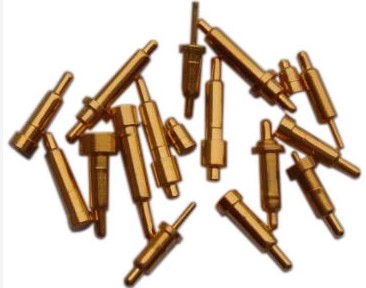source:Industry News release time:2024-09-25 Article author:创始人 Popular:POGO PIN

1. Electrical performance
Contact resistance: This is a key electrical performance indicator of the pin and jack. The smaller the contact resistance, the smaller the energy loss when the current passes through, and the higher the quality of signal transmission. It depends on factors such as the contact material, contact area, and contact pressure of the pin and jack. For example, the use of gold-plated pins and jacks can effectively reduce the contact resistance because gold has good conductivity and oxidation resistance. In high-frequency signal transmission, low contact resistance is particularly important, which can reduce signal attenuation and distortion.
Insulation resistance: In addition to the conductive part, the pin and jack also have an insulating part. Insulation resistance measures the ability of the insulating material to prevent current leakage. If the insulation resistance is too low, it may cause leakage, short circuit and other problems, affecting the normal operation of the equipment. The selection of insulating materials, manufacturing processes, and environmental factors (such as temperature and humidity) will affect the insulation resistance.
Withstand voltage performance: Pins and jacks need to be able to withstand a certain voltage without breakdown. This is crucial for connectors used in high-voltage environments. Withstand voltage performance is related to the thickness and quality of the insulating material and the structural design of the pin and jack.
2. Mechanical properties
Plug-in force: The size of the plug-in force directly affects the user experience of the connector. If the plug-in force is too large, it will cause operational difficulties for the user and may even damage the connected device; if the plug-in force is too small, it may cause poor contact. The plug-in force is mainly determined by the friction between the pin and the socket and the elastic force of the contact spring. When designing, it is necessary to reasonably adjust the size of the plug-in force according to the actual application scenario.
Mechanical life: This indicates the number of plug-ins and plugs that the pin and socket can withstand under normal use conditions. Pins and sockets with long mechanical life can reduce the maintenance cost and replacement frequency of the equipment. It is closely related to the material, structural design and manufacturing process of the pin and socket. For example, the use of high-strength alloy materials and optimized contact structures can improve the mechanical life.
3. Environmental performance
High temperature and low temperature resistance: In different environments, the temperature may vary greatly. Pins and sockets need to be able to work normally in high and low temperature environments. In high temperature environments, the material cannot soften, deform or degrade; in low temperature environments, the material cannot become brittle. For example, in the aerospace field, connectors may face extreme temperature environments, which requires the use of special high-temperature and cold-resistant materials to manufacture pins and sockets.
Corrosion resistance: In some industrial environments, marine environments, or chemical laboratories, pins and sockets may be exposed to various corrosive substances. Good corrosion resistance can ensure that pins and sockets can be used for a long time in these environments without being corroded. Corrosion resistance can be improved by surface treatment of pins and sockets (such as electroplating, coating, etc.) or by selecting corrosion-resistant materials (such as stainless steel, titanium alloy, etc.).
Read recommendations:
M2711 2.0x6.5(1A)Spring contact needle Processor
M2680 1.8x13(1A)Solder-cup Pogo Pin company
M1929 2.0x10.5(1A)molecular probe Vendor